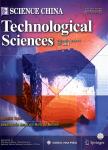Effect of impact deformation on shape recovery behavior in Fe-Mn-Si shape memory alloy under shape memory training process with cyclic thermo-mechanical loading
Effect of impact deformation on shape recovery behavior in Fe-Mn-Si shape memory alloy under shape memory training process with cyclic thermo-mechanical loading作者机构:Graduate School of EngineeringHiroshima UniversityHigashi-Hiroshima739-8527Japan Cluster of Excellence livMatS@FIT-Freiburg Center for Interactive Materials and Bioinspired TechnologiesUniversity of FreiburgFreiburgD-79110Germany Academy of Science and TechnologyHiroshima UniversityHigashi-Hiroshima739-8527Japan School of AeronauticsNorthwestern Polytechnical UniversityXi’an710072China
出 版 物:《Science China(Technological Sciences)》 (中国科学(技术科学英文版))
年 卷 期:2021年第64卷第7期
页 面:1389-1400页
核心收录:
学科分类:0810[工学-信息与通信工程] 08[工学] 0805[工学-材料科学与工程(可授工学、理学学位)] 080502[工学-材料学] 0702[理学-物理学] 0812[工学-计算机科学与技术(可授工学、理学学位)]
基 金:supported by the Amada Foundation and the 26th ISIJ Research Promotion Grant Japan
主 题:Fe-Mn-Si shape memory alloy training cyclic thermo-mechanical process split Hopkinson pressure bar momentumtrap impact deformation
摘 要:In the past studies, it has been discovered that the shape memory effect(SME) in the Fe-Mn-Si shape memory alloy(Fe-SMA)can gradually be enhanced by a pre-process called as shape memory training process under cyclic thermo-mechanical *** the other hand, it has been shown that the SME of Fe-SMA can also be affected by changing the strain rate. Therefore, it is possible to improve the SME by combining the strain rate sensitivity and shape memory training process. However, the improvement of SME caused by the training process under impact condition is still unclear. For the training process under impact condition, it is difficult to interrupt the test at the desired strain level due to many reflections of stress waves, which reload the specimen from the free ends. In this paper, to obtain reliable experimental results of SME after the training process under impact condition, the stress waves after first loading are eliminated by the double momentum-trap structure introduced into the impact tensile testing apparatus based on the split Hopkinson pressure bar method. In order to achieve an optimum design of the structure used in experiments, the finite element simulation of the structure is performed. Then, tensile tests in the training process of Fe-28Mn-6Si-5Cr alloy at different strain rates including the impact level are conducted and temperature change of the specimen is measured during training and heating process. As a result, the improvement of SME in the alloy after the training process under quasi-static and impact loading is compared with that under quasi-static loading through verification processes.



